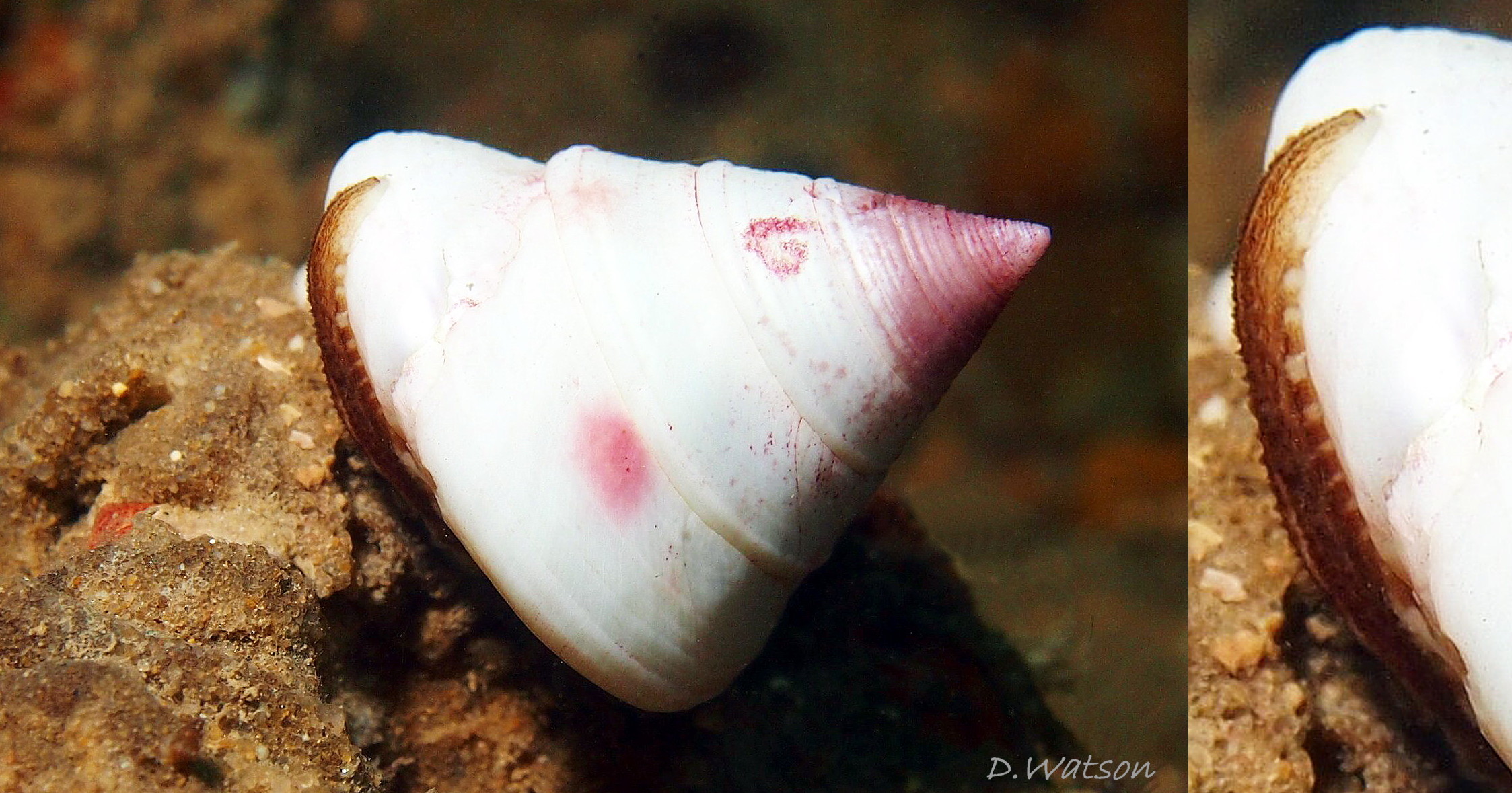Wiping shell with metapodium.
C. zizyphinum feeds on micro-algae and other micro-organisms brushed by its radula from rocks and stones, and by “shell wiping” (about 20% of intake) (Jones, S.P. et al., 2001) . Twice every 24 hours its metapodium (“tail”) is extended with its crest opened to expose a mucus-producing area which it wipes over the shell for about 20 minutes. The coated shell acts like a fly paper trapping micro-organisms and other water borne particles which are ingested along with mucus. This behaviour operates most effectively in strong currents loaded with particles; C. zizyphinum is often large and abundant in marine rapids. This specimen is perched on top of a boulder where it is exposed to water movement. Shell wiping usually maintains the shell free of fouling by epizooic growths (but not always www.bioimages.org.uk/html/r164639.htm ), and is the cause of live shells sometimes feeling slippery.
Sublittoral, 11 m, on boulder summit. Norfolk, England. September 2018 © D. Watson.

